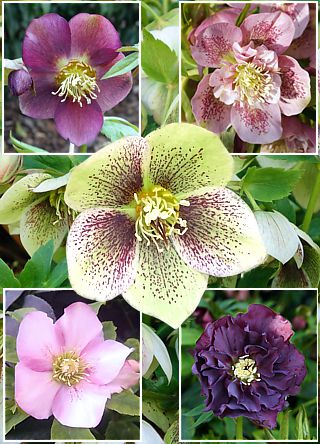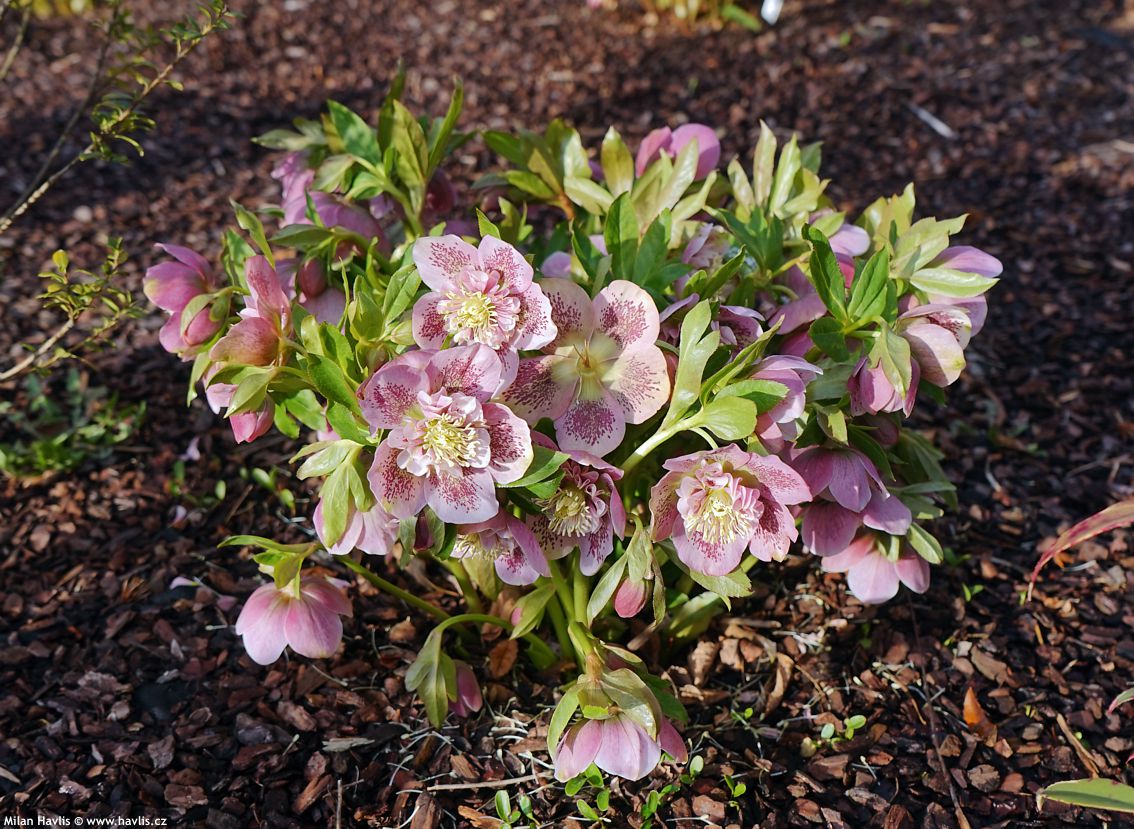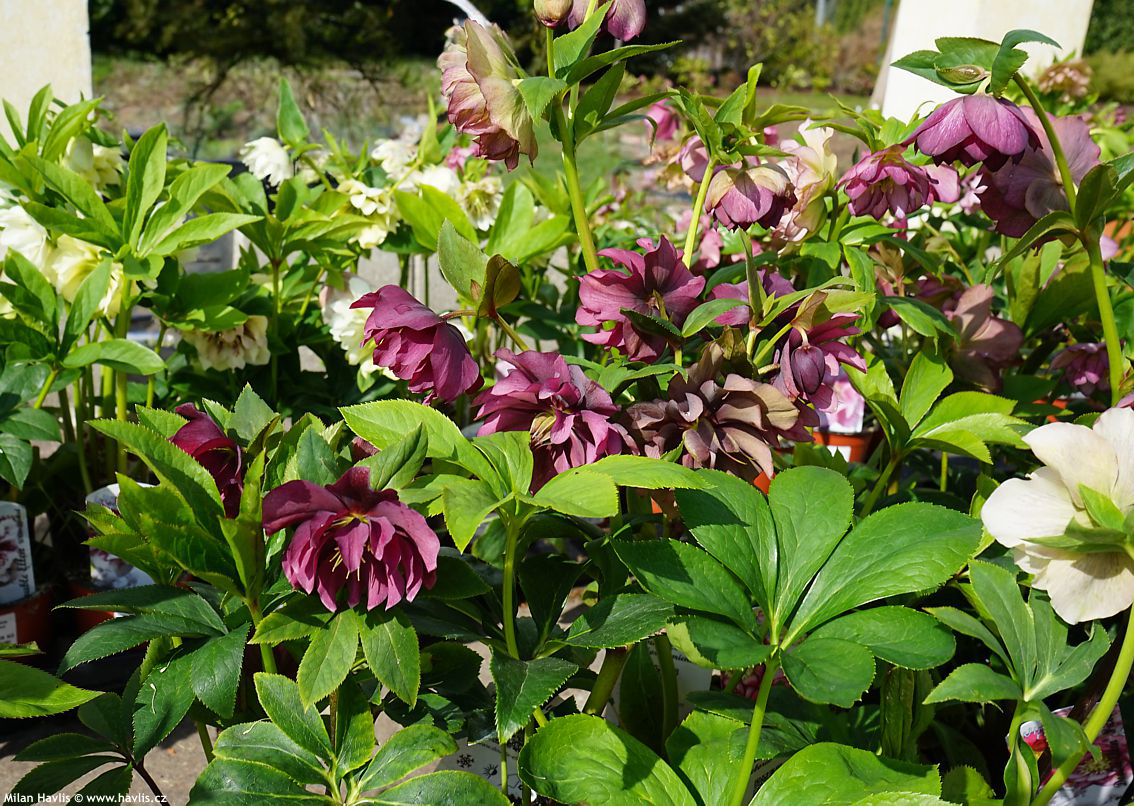Helleborus orientalis Lenten rose, hellebore
size/type
low perennial,low perennial
usual height
0,3-0,5m
usual width
0,3-0,6m
leaves
evergreen broadleaf
colour of leaves
flowers
showy
colour of flowers
blooming time
February-April
location
semi-shade to shade
soil type
neutral to alkaline
soil moisture requirements
evenly moist (dislikes drought)
winter protection
for zone 5+6

for zone 7

categorized
Description of the plant:
Lenten rose is a hellebore species native to southern Europe whose native habitat stretches from Greece to Turkey. It was first described by French naturalist Jean-Baptiste Lamarck (1744-1829) in 1789. He named it orientalis = eastern to better distinguish it from the black hellebore (h. niger), which is also a European species, but unlike the eastern hellebore, it is found more in the central to lower belt of Europe from Switzerland, through Germany to Croatia and Slovenia whereas Lenten rose is rather the domain of the Caucasus and the Balkans. Surprising and very useful for us is its superb hardiness which paradoxically does not reflect the typical climate of its home as it copes with frosts down to at least -34 °C.It is an evergreen perennial with large, palmately divided leaves with stiff stalks. They are dark green, leathery, often glossy, and divided into 3 to 5 individual leaflets of mostly lanceolate to oval shape with serrated margins. Some plants have a pair of 3-palmate leaves grown together so close that they look like 6-palmate which is genetically impossible to have an even number of leaflets in a Lenten rose. If the leaves are exhausted and unsightly at the end of winter, you can remove them just before the stems with flowers buds appear.
This species is quite variable in both leaves and flowers whose colour and shape varies from plant to plant. The flowers can be single with 5 differently shaped petals or semidouble to double - it all depends on the genetic make-up and slight mutation of each seed. Only plants propagated by tissue culture retain identical traits and these are then selected and named as varieties. The flower colours are cold hues of light and dark pink or rose, purple, and maroon to almost black, and the flowers are often highlighted with darker coloured freckles, spots or dots. White flowers are present, too, yet not predominant, and exceptionally, light green to yellowish flowers may appear. Their centres are decorated with a bunch of creamy white to beige stamens and a chartreuse crown.
Blooming begins in the first frost-free days of the second half of winter. It lasts a very long time, sometimes up to 3 months, because after the stamens have fallen, the flower still looks good for a long time, and even when the petals colour saturation weakens, they are not deteriorated in any way until perhaps May. If you don't want to get seeds, once the flowers lose their rich colour remove the stems with spent flowers at the ground level to encourage production of new leaves.
Eastern hellebore likes heavy, evenly moist, neutral to alkaline, rich in humus soil in dappled shade or filtered sun and will take full shade, too. Fertilizing will increase flowering and help the leaves remain strong and nice throughout the winter. Grow it somewhere near your house entrance or close to the window you look out of frequently so that you can enjoy the plant when it starts flowering since at that time the weather outside is not yet ideal for walking around the garden. The flowers can cheer up a number of grey and gloomy days of late winter therefore thumbs up for hellebore! Harmful if eaten. It copes with harsh conditions and is hardy to at least -34 °C (USDA zone 4), some Canadians growers even confirm they grow them in zone 3 (to -37 °C).
Last update 19-02-2024
QUICK PRICE OVERVIEW
CURRENTLY SOLD OUT
















